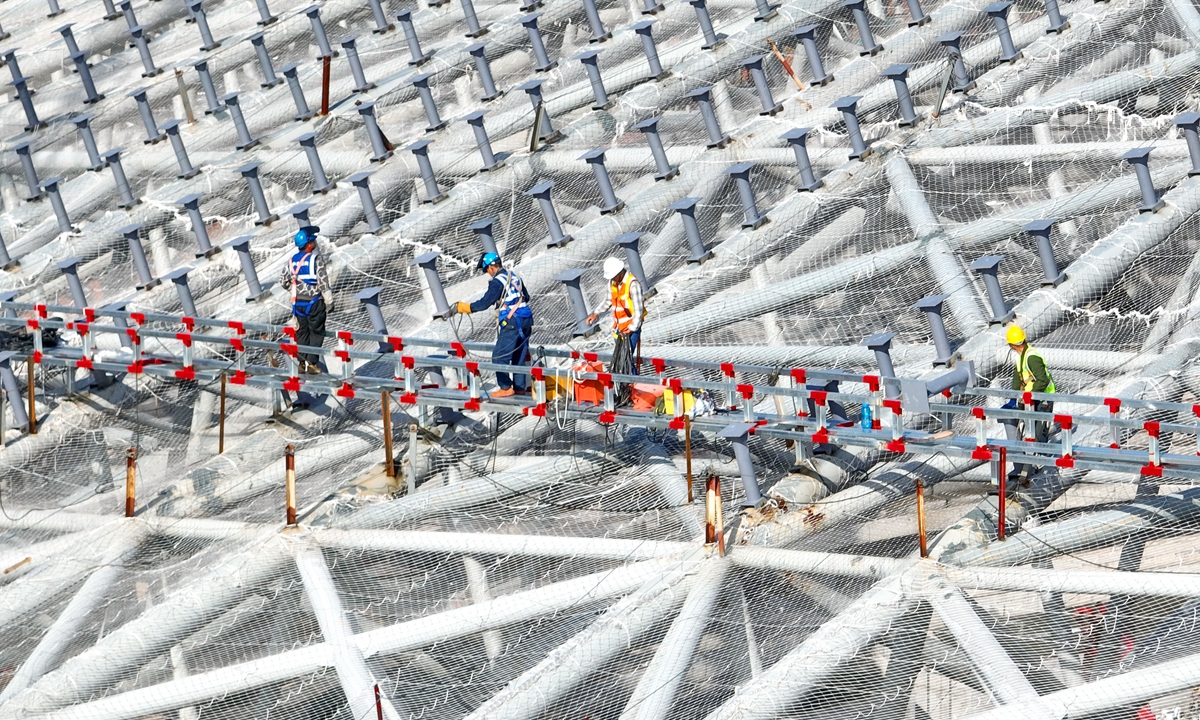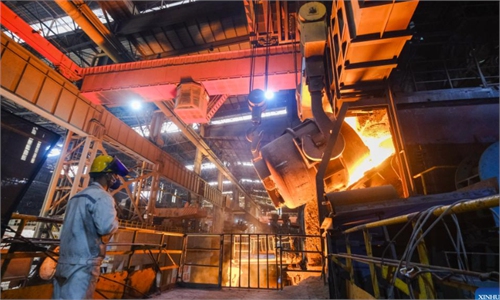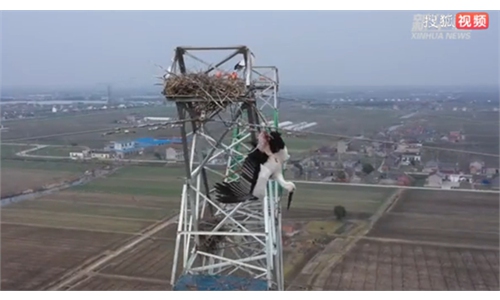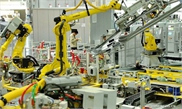US hype over China's steel sector 'political,' ignores green transformation efforts: experts

Workers install steel structures on top of a stadium in Ganzhou, East China's Jiangxi Province on May 3, 2023. In 2021, value added output by China's sports-related facilities reached 23.6 billion yuan ($3.41 billion), according to the National Bureau of Statistics.
Ongoing US hype and distortion of China's steel industry signal a political intention to crack down on China, which has spared no effort on its low-carbon transformation and high-quality development in recent years, experts said.
US Commerce Secretary Gina Raimondo said on Tuesday during an American Iron and Steel Institute conference in Washington that the Biden administration was "extremely focused" on reaching a "green steel" arrangement with the EU and other partners that disadvantages carbon-intensive steel from China and elsewhere, according to a Reuters report.
"China doesn't have the clean steel. We're pushing our industry to have higher environmental standards and cleaner steel, as is Europe," Raimondo said.
It was not the first time that the US official had smeared China's steel industry while touting the agreement it reached with the EU.
In an op-ed by Raimondo and US Trade Representative Katherine Tai published in the Pittsburgh Post-Gazette in 2021, China became their target and was accused of flooding global markets with low prices, disrupting the trade balance, and having an impact on US employment.
"Both the US and the EU have had a complex contradiction over the steel and aluminum industries for a long time and the US wants to shift that contradiction by luring its allies to target China, the world's largest steel producer, a move that carries strong political connotations," Cui Hongjian, director of the Department of European Studies at the China Institute of International Studies, told the Global Times on Wednesday.
The EU and the US are now advancing in talks on a framework for decarbonizing the aluminum and steel sectors ahead of an October deadline. The framework is based on a deal reached in 2021 under which Washington allows EU countries duty-free access for steel and aluminum exports to the US in volumes comparable to those shipped before tariffs imposed by former president Donald Trump's administration in 2018. The EU ended retaliatory tariffs on imported US goods in line with the deal.
Meanwhile, Raimondo declined to say whether she thought it was realistic to meet an October deadline for reaching a deal, referring such questions to Tai's office, according to the Reuters report.
"About five or six years ago, they often accused China's steel industry of overcapacity, citing the large volume of exports, and now they have changed the narrative to green steel, still taking aim at China," Cui noted.
He added that China's steel industry is at a different phase from that of the developed EU and US markets, which have gone through a transition period.
"It is not reasonable for them for judge China or takes unilateral measures against China by using the standard in line with their current development phase."
Green transformation and upgrades started in China's steel sector a decade ago, and efforts in that direction have not halted, Wang Guoqing, research director at Beijing Lange Steel Information Research Center, told the Global Times on Wednesday.
"The teaming up of the US and EU on green steel could pose some challenges to China's steel sector, especially for exporters of high-carbon products, although the impact is limited in the short term," she noted.
China's leadership has proposed the "dual goals" of peaking its carbon dioxide emissions before 2030 and achieving carbon neutrality before 2060. The domestic steel industry, which remains the largest emitter among all manufacturing sectors in China, accounts for about 15 percent of the domestic carbon footprint. But it has been accelerating its shift toward lower carbon and less pollution over the past few years.
Wang took the example of China Baowu Steel Group, the world's largest steel conglomerate, which has been advancing its technology used to lower carbon pollution by allocating more solar panels to generate electricity instead of fuel-fired power and exploring hydrogen metallurgy, which is a technology that applies hydrogen instead of carbon as an agent to reduce carbon dioxide emissions.
China's crude steel output fell for a second year in a row in 2022, down 1.7 percent year-on-year to 1.02 billion tons, data from the National Bureau of Statistics showed.



